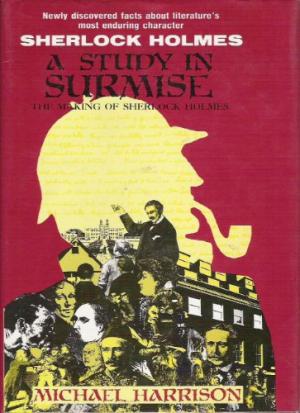


Table of Contents
Introduction by
Ellery Queen
Acknowledgments
A Word to the Reader
1. Dr. Conan Doyle Reads The Times
2. A Baker Vanishes
3. The First
Scherer Encounter
4. The Tragedy of
Edmund Galley
5. The King
vs. Galley
6. The Fight To
Save Galley
7. The
Vindication of Edmund Galley
8. Galley: The
Proof from Name-Use
9. General
Gordon: Godfather of the Baker Street Irregulars
10. Dr. Bell and
Dr. Watson
11. The English
Opium-Eater
Appendices
I. The Code of the Canon
II. Conanical Nomenclature
III. Dr. Sam Johnson: Criminologist and Detective
IV. The Tragedy of Mrs. Florence Chandler Maybrick
Index
(1984)
e-Book, 258 pp. with illos & Index
(Tina Rhea #62)
ISBN 978-1-55497-315-6
$10.00
Introduction by Ellery Queen
In the Introduction to Ellery Queen’s suppressed anthology, The Misadventures of Sherlock Holmes (1944), we wrote: "Someone has said that more has been written about Sherlock Holmes than about any other character in fiction. It is further true that more has been written about Holmes by others than by Doyle himself." As the years pass since the first Sherlock Holmes story was published—A Study in Scarlet (1887)—the two statements quoted above become more and more incontestable. Indeed, many Sherlockian devotees may have wondered if anything new can still be written about the creation of Sherlock Holmes—hasn’t everything already been said?
The answer is no: not all has been learned, and not all will ever be learned. The well of speculation and conjecture is bottomless, and research about Sherlock Holmes will never die, or even fade away. The interest, perhaps the fanaticism, in the creative sources of Sherlock Holmes is eternal.
And now Michael Harrison, author of In the Footsteps of Sherlock Holmes (1958), has engaged in some new and remarkable research, tracking down hitherto unknown and unsuspected origins of The Great Detective, and has come up with what we unhesitatingly describe as the most important discovery in Sherlockiana of the past decade, perhaps of the past quarter of a century. No, we’ll go even further: perhaps the most important Holmesian discovery possible to have been made since the death in 1930 of Sir Arthur Conan Doyle, the only one who knew all the Sherlockian answers ...